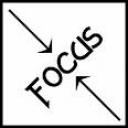
Rick Pierce supports Hsinchu International School in multiple ways as we grow and develop as a learning community. He recently started blogging, as I needed help finding many blogs to read on educational leadership. You must love it when someone sees a need and jumps in to try something new.
I responded to one of Rick’s posts as it applied to leadership in international schools. Here is a direct link to Rick’s excellent post, followed by my comment.
As Jeff and I continue our discussion on the SOS podcast about how to help schools make the shift, Rick hits the mark on what I think is the number one factor needed for shifting our schools- leadership with knowledge, skills, and vision to help us work together to become the schools we want to be.

My Comments:
Your points hit home, especially when institutional change does, at times, seem to devalue staff members and their feelings. Many international educators living away from home countries connect to the school community as part of their emotional support network. When the school leaders make decisions or act without the participation and consideration of these very connected community members, a wide array of emotions involving anger, loss, fear, etc., come into play.
As you point out so clearly, there are models and books to help our school leaders focus on the individuals in the community to involve them in the discussion, decision-making, and eventual transition period when changes do occur. This begs the question of what is happening internationally to support the professional development of our school leaders. All of our schools have PD programs for teachers. What is happening to the administrators?
Many school leaders will say one of the most significant barriers to this community-building and group decision-making process is the lack of time. I would counter that, especially in large, fast-paced international schools, the lack of time for thoughtful reflection and processing is due to poor leadership as schools try to do everything under the sun for their clients (i.e., students and parents) and barrel forward out of control without focus and direction.
Well-thought-out strategic plans, structured communication systems, and guiding mission statements, as well as learning outcomes that are genuinely supported, can alleviate many of the problems that come with the “lack of time” argument that is so often put forth to explain why problems occur in our schools. School leaders must have the courage and compassion to say “no” to us educators as we bring forth new ideas and proposals that do not fit into the structure of our school missions. We do need to be lean, loving (not mean) learning communities in our schools, using our time thoughtfully and carefully.
By knowing who we are and what we can and cannot do, international schools can improve how we use our time, especially when it comes to preparing for change and the needed thoughtful transition process that you so correctly point out in this post.
Thanks, Rick, for starting this discussion that will hopefully continue to a broader audience.



